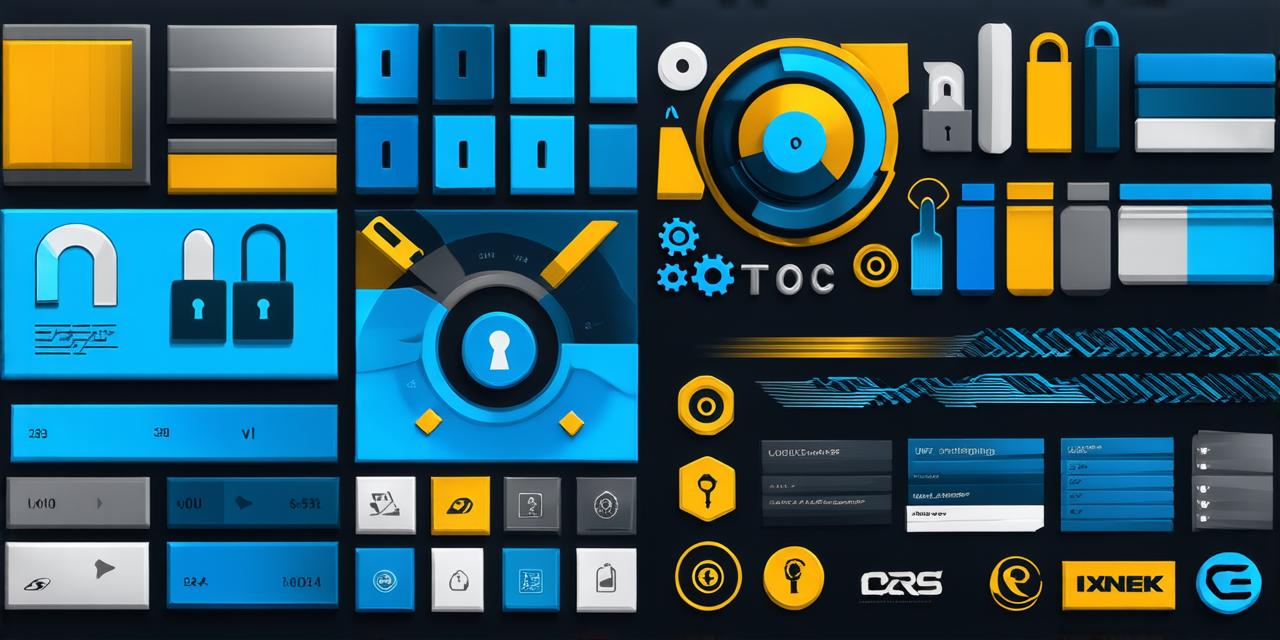What is Blockchain Technology?
Blockchain technology is a decentralized system that allows for secure and transparent transactions without the need for intermediaries such as banks or governments. It consists of a chain of blocks, each containing information about a transaction. Each block is linked to the previous one using cryptography, making it very difficult to alter or tamper with.
The most well-known example of blockchain technology is Bitcoin, which uses a public ledger to track all transactions made within its network. Other blockchain platforms such as Ethereum and Hyperledger are used for various applications such as smart contracts and supply chain management.
What is Distributed Ledger Technology (DLT)?
Distributed ledger technology, on the other hand, refers to a system that uses a decentralized database to store and manage data. It allows multiple parties to access and update the same information in real-time without the need for intermediaries. DLT is often used in industries such as finance and healthcare where there is a need to share sensitive information across different organizations.
One of the main features of DLT is its ability to maintain data immutability, meaning that once data is recorded on the ledger, it cannot be altered or deleted. This makes it ideal for applications where transparency and accuracy are crucial.
The key difference between blockchain and DLT is that blockchain typically uses a public ledger that is accessible to anyone on the network, while DLT may use a private or permissioned ledger that is only accessible to authorized parties. Additionally, blockchain is often associated with cryptocurrencies, while DLT has a broader range of applications across various industries.
Real-Life Examples of Blockchain and DLT
Let’s take a look at some real-life examples of blockchain and DLT to better understand their differences:
Blockchain: Bitcoin
Bitcoin is the most well-known example of blockchain technology. It uses a public ledger to track all transactions made within its network, which allows for secure and transparent transactions without intermediaries. Bitcoin’s decentralized nature also makes it resistant to government control and censorship.
Blockchain: Supply Chain Management
Supply chain management is another industry that has benefited from blockchain technology. Blockchain can be used to create a tamper-proof record of the entire supply chain journey, including production, transportation, and distribution. This allows for greater transparency and accountability, which can help to reduce fraud and improve efficiency.
DLT: Healthcare
Healthcare is an industry that has been slow to adopt technology, but DLT is starting to change that. DLT can be used to securely share patient data across different healthcare providers while maintaining data privacy and security. This can help to reduce medical errors, improve patient outcomes, and reduce costs.
DLT: Finance
The finance industry is another area where DLT is making a difference. DLT can be used to create faster, more secure, and less expensive payment systems. It can also be used to facilitate trade finance by creating a tamper-proof record of the entire transaction process.
Factors to Consider When Choosing between Blockchain and DLT
When deciding which technology to use for your project, there are several factors to consider:
- Decentralization vs. Centralization
Blockchain is a highly decentralized system, while DLT may be more centralized or permissioned. This means that blockchain is ideal for applications where decentralization is crucial, such as cryptocurrencies and supply chain management. On the other hand, DLT may be better suited to applications where data privacy and security are paramount, such as healthcare and finance. - Public vs. Private Ledger
Blockchain typically uses a public ledger that is accessible to anyone on the network. This allows for greater transparency and accountability, but it can also make the system more vulnerable to attacks. DLT may use a private or permissioned ledger that is only accessible to authorized parties, which provides greater control and security. - Security vs. Efficiency
Both blockchain and DLT are secure systems, but they may differ in terms of efficiency. Blockchain can be slower and more resource-intensive than other systems due to its decentralized nature. DLT may be faster and more efficient, especially for smaller data sets. - Cost vs. Complexity
Blockchain technology can be more expensive to implement and maintain than other systems, as it requires specialized hardware and software. DLT may be less expensive to implement, but it may also require more expertise and resources to manage. - Regulatory Compliance
Finally, it’s important to consider regulatory compliance when choosing between blockchain and DLT. Some industries and applications may be subject to specific regulations or requirements, which can impact the choice of technology.Summary

In conclusion, while blockchain and DLT are often used interchangeably, they are not exactly the same thing. Blockchain is a decentralized system that uses a public ledger for secure and transparent transactions, while DLT may be more centralized or permissioned, with a private or public ledger. When choosing between blockchain and DLT, it’s important to consider factors such as decentralization vs. centralization, public vs. private ledger, security vs. efficiency, cost vs. complexity, and regulatory compliance. Ultimately, the choice of technology will depend on the specific needs and requirements of your project.
